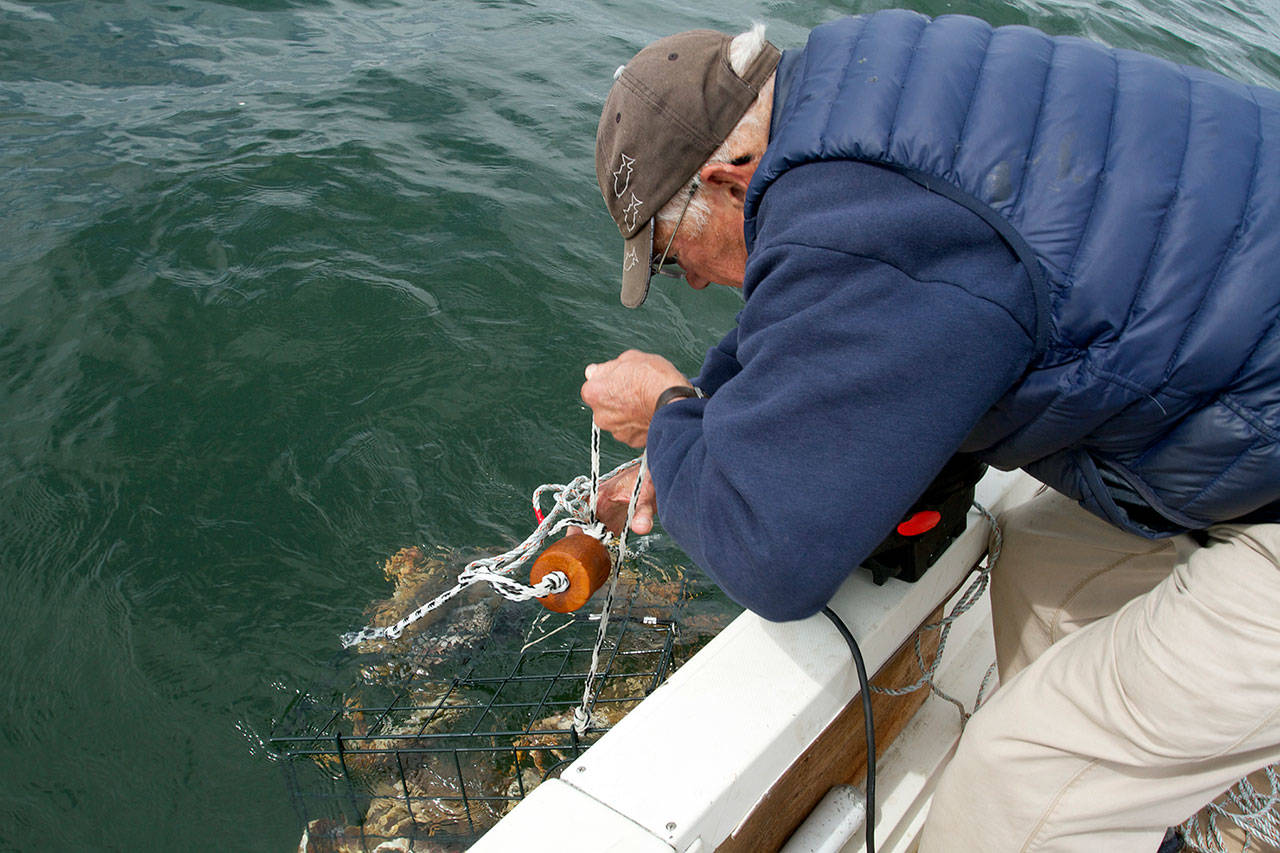Joining their commercial counterparts, recreational crabbers will no longer be dropping pots in Puget Sound Marine Areas 8-1 and 8-2 for the remainder of 2019. Despite reopening winter crabbing earlier this month, the Washington Department of Fish and Wildlife has announced that the season will abruptly close again after Wednesday, Oct. 23.
Those areas have a significant impact on crabbing on Whidbey Island, with Area 8-1 covering Deception Pass, Hope Island and Skagit Bay, and Marine Area 8-2 incorporating the east side of South Whidbey Island from Rocky Point to Possession Point. The closure covers all types, including Dungeness, red rock and Tanner crabs.
Ralph Downes, an enforcement officer with the state Department of Fish and Wildlife, said the season was closed earlier than anticipated because the state quota has been exceeded in these areas. As to what caused that to occur, he explained there can be multiple contributing factors.
“I’d have to take a closer look at the numbers,” he said, “but from what I saw on the water, there looked to be more commercial participation in that area than usual for the opener.”
All areas open at the same time for the commercial fishery, according to Downes, which includes the waters north of a line from Apple Cove Point to Point Edwards up to the Canadian border and incorporating the Strait of Juan de Fuca. Fishers sometimes stay with the waters close to home but often move to where they believe the success rate will be best at the start of the season.
Combined with that, there was a much higher catch rate than was expected, meaning that “more fishers caught more crab more quickly than was predicted.” When the fishery reopened on Oct. 1, the state’s allocation for Areas 8-1 and 8-2 was quickly exceeded, even when getting commercial non-treaty fishers off the waters by Oct. 9.
Puget Sound Crab Manager Katelyn Bosley acknowledges that the closures are going to come as a surprise because the crabbing in these areas has been good since the reopening on Oct. 1.
“It’s been a short season, but our latest numbers show that we’ve passed our harvest quota in these areas,” Bosley said. “By closing now, we have a good chance of conserving crab populations for next year.”
Another issue being investigated is the required reporting procedures that potentially prevented Fish and Wildlife from getting the information needed to close the commercial fishery before exceeding the intended allocation, explained Downes.
The state manages commercial crab seasons using catch accounting by crab buyers who report pounds of crab purchased every day, but the early closure appears to be a result of commercial purchase data being reported after the daily deadlines.
“If crab catches are not reported in a timely manner, we risk our ability to maintain a sustainable fishery,” stated Steve Bear, chief of Fish and Wildlife Law Enforcement Program, as reported on the official website on Oct. 22. “WDFW police are investigating these non-compliance issues to determine if the filing of criminal charges is appropriate.”
Other Marine Areas in Puget Sound remain open, including Areas 4, 5, 6, 7 and 9, except those waters between the Hood Canal Bridge to a line connecting Foulweather Bluff to Olele Point. Anyone holding a sports fishers license to fish for Dungeness crab in Puget Sound can continue to crab in those areas seven days a week through Dec. 31.
Whether there’s a chance for a later reopening of Areas 8-1 and 8-2 around Whidbey waters is yet to be determined, according to Downes. One way for that to happen would be to negotiate an increase in allocation with the applicable tribes.
“This may occur, since each side reduced their allocation by 100,000 pounds this year, compared to the usual 1.1 million-pound allocation per side,” said Downes. “It would seem that the abundance is there due to the high catch rate, but only time will tell.”
For more information about recreational crabbing in Puget Sound, visit wdfw.wa.gov/fishing/shellfishing-regulations/crab.



